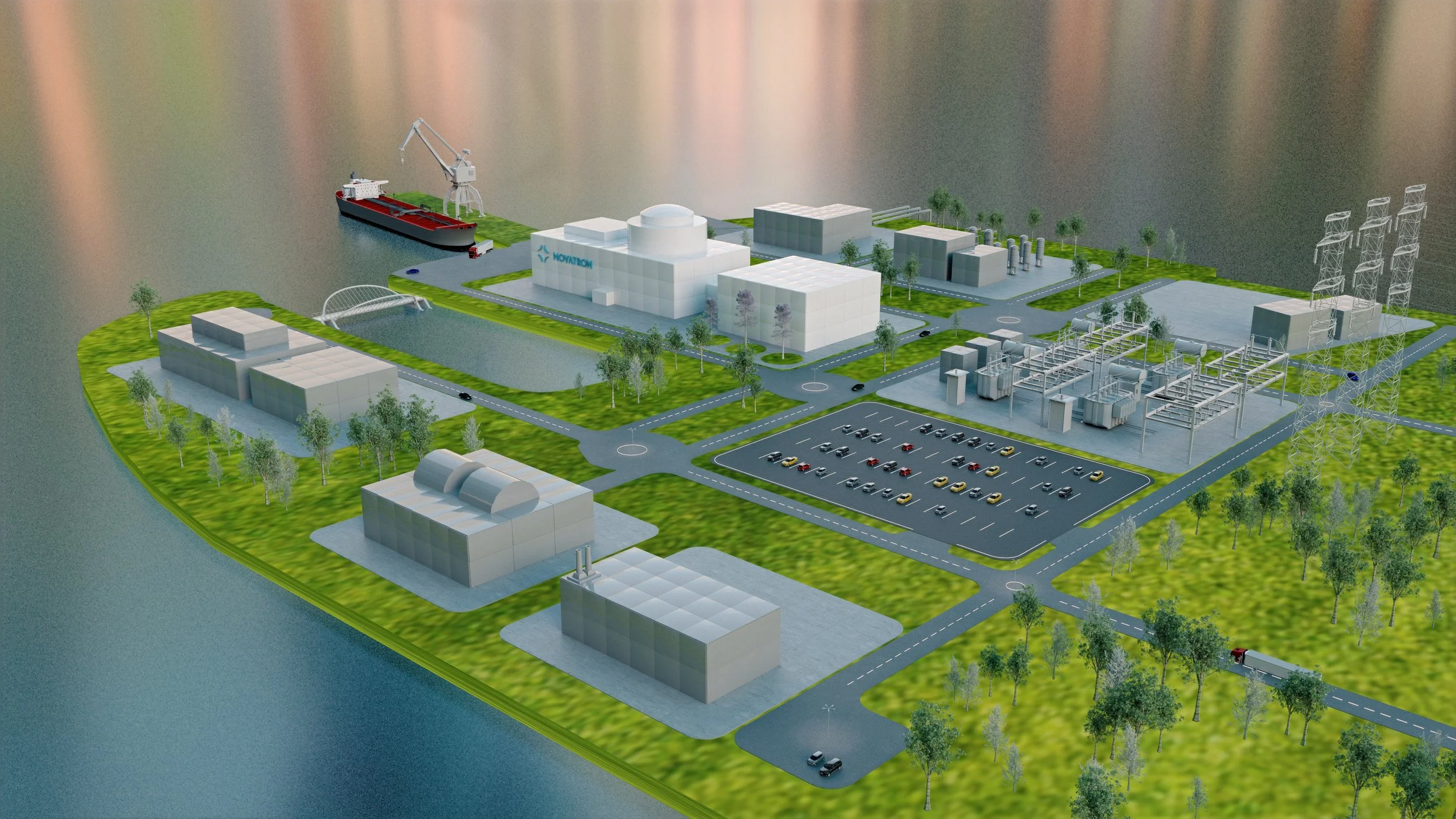New report reveals top Nordic sites for fusion reactor
Illustration of NOVATRON 3, a pilot fusion reactor.
As the global fusion race accelerates, Novatron Fusion Group (NFG) – the only private fusion energy company in the Nordics – is preparing to build a pilot fusion reactor in the Nordic region during the 2030s. A new study conducted by VTT Technical Research Centre of Finland shows that Denmark, Finland, Norway and Sweden all meet the technical requirements to host the facility, but that Finland is the most prepared in terms of regulatory readiness.
Fusion energy has long been anticipated to become a solution to some of society’s most pressing challenges – reducing dependence on fossil fuels while meeting the growing energy demand. Now, fusion technology is moving closer to becoming a reality in the Nordics.
NFG is developing a magnetic mirror fusion reactor concept, targeting to create a commercially viable and cost-effective source of clean energy. To create a solid foundation for informed decision-making, NFG commissioned VTT to evaluate potential locations for a pilot fusion reactor across the four Nordic countries.
The report findings are presented at the Nordic Fusion Forum in Espoo, Finland, today. One of the speakers, Sari Multala, Minister of Climate and the Environment of Finland, highlights that breakthroughs in fusion technology are becoming a reality.
“Breakthroughs in fusion technology are no longer just theoretical. Advances in digitalization and the use of artificial intelligence have certainly helped, but above all, it’s the hard work and determination of researchers and engineers that have brought us this far. ”
VTT’s analysis examined regulatory, environmental, operational and societal factors in each country to identify both challenges and opportunities relevant to fusion deployment.
“VTT has done an excellent job delivering a thorough report that provides us with a clear and actionable roadmap to move from concept to construction. Cross-border collaboration, legislative reforms and the development of fusion strategies will be key to accelerating a fusion ecosystem in the Nordic region. ”
Best potential lies in existing industrial areas close to research hubs
According to Markus Airila, Research Team Leader at VTT, the most promising locations for a fusion reactor are found in existing industrial zones with strong transport connections.
“Proximity to ports, heavy-load land transport links and access to research hubs are key features of the most suitable locations. ”
Based on the study, the most promising regions for a pilot fusion reactor are:
1. Helsinki metropolitan area in Finland
2. The area between Stockholm and Nyköping in Sweden
3. Copenhagen-Malmö corridor spanning Denmark and Sweden
In addition, the study identified approximately ten secondary focus areas that represent all four countries.
Regulatory readiness varies in the Nordics
As an emerging technology, fusion energy must overcome certain regulatory hurdles. When comparing the regulatory environments in each country, the study found that Finnish legislation is the most advanced, followed closely by that of Sweden.
Finland is in the process of renewing its Nuclear Energy Act, which will streamline the licensing process and reduce barriers for pilot fusion sites. The changes are expected to become effective in 2027.
“By following a similar approach, the rest of the Nordics would strengthen their position in the international fusion sector. ”
Countries with a dedicated fusion strategy and distinct legislation for fusion and fission are more attractive to developers, as these measures help reduce non-technical risks.
Sweden has an established nuclear legislation that explicitly includes fusion reactors. However, the regulation is still subject to comprehensive, fission-focused requirements. Denmark and Norway operate under older nuclear regulations with no specific mentions of fusion energy, resulting in some political and procedural uncertainty.
Fusion may be closer than we think
According to Airila, the findings indicate that the Nordic region is ready to lead the way in fusion energy development.
“With close collaboration between national authorities, industry and local communities, we could see the first fusion projects becoming reality sooner than many expect. And fusion is pretty much ready to start bringing other societal benefits from boosting research to enhancing testing capabilities, while its maturation for competitive energy production is still a major challenge for developers.”
The next phase of the project will involve detailed, site-specific investigations in cooperation with interested Nordic stakeholders and industrial partners. This stage will refine potential sites based on land ownership, local engagement and technical feasibility.
Energy company St1 announced in the spring of 2025 that it has invested 13 million euros in NFG to support the energy transition in the Nordics.
“Novatron Fusion Group is driving a breakthrough in clean energy, and we’re proud to support that momentum with a long-term commitment. The insights from this report highlight the Nordic region’s opportunities in the global fusion development race. We’re excited to contribute to the advancement of secure, fossil-free energy and to help shape a collaborative fusion ecosystem across the Nordic borders.”
For more information, please see the full report.

